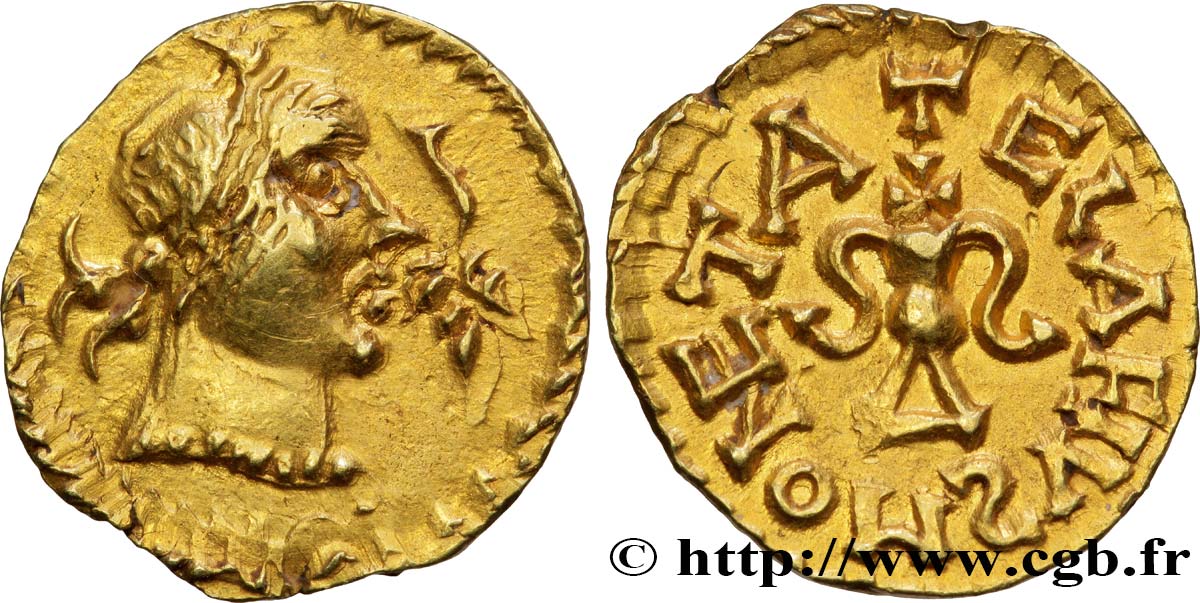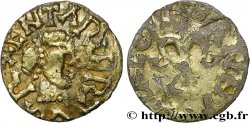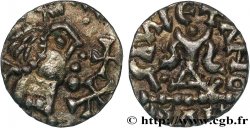Live auction - bmv_348197 - MEROVINGIAN COINAGE - BANASSAC (BANNACIACO) - Lozere Triens, au nom de Saint-Éloi, buste à la palme
You must signin and be an approved bidder to bid, LOGIN TO BID. Accounts are subject to approval and the approval process takes place within 48 hours. Do not wait until the day a sale closes to register. Clicking on "BID" constitutes acceptance of the terms of use of cgb.fr private live auctions.
Bids must be placed in whole Euro amounts only. The sale will start closing at the time stated on the item description; any bids received at the site after the closing time will not be executed. Transmission times may vary and bids could be rejected if you wait until the last second. For further information check the Live auction FAQ
All winning bids are subject to a 18% buyer’s fee.
All winning bids are subject to a 18% buyer’s fee.
| Estimate : | 5 000 € |
| Price : | 3 000 € |
| Maximum bid : | 3 000 € |
| End of the sale : | 31 March 2015 15:17:01 |
| bidders : | 1 bidder |
Type : Triens, au nom de Saint-Éloi, buste à la palme
Date: c. 620-640
Mint name / Town : Banassac (48)
Metal : gold
Diameter : 12,5 mm
Orientation dies : 6 h.
Weight : 1,29 g.
Rarity : R2
Coments on the condition:
Triens intéressant avec un revers complet et une belle frappe vigoureuse. Le droit est complet mais avec un léger tréflage
Catalogue references :
Obverse
Obverse legend : ANÉPIGRAPHE.
Obverse description : Tête diadémée à droite, diadème et cou perlés, un rameau à trois baies ou feuilles stylisées devant le visage et une guirlande végétale en guise de grènetis.
Reverse
Reverse legend : T ELAFIVS MONETA.
Reverse description : Calice à deux anses, surmonté d’une croisette ; légende autour et guirlande végétale en guise de grènetis.
Commentary
Les triens au nom d’Elafius sont parmi les plus lourds de ceux frappés à Banassac. L’orfèvre Éloi devint contrôleur des mines et métaux, maître des monnaies, puis grand argentier du royaume de Clotaire II, puis trésorier de Dagobert Ier avant d’être élu évêque de Noyon en 641.








 Report a mistake
Report a mistake Print the page
Print the page Share my selection
Share my selection Ask a question
Ask a question Consign / sell
Consign / sell
 Full data
Full data